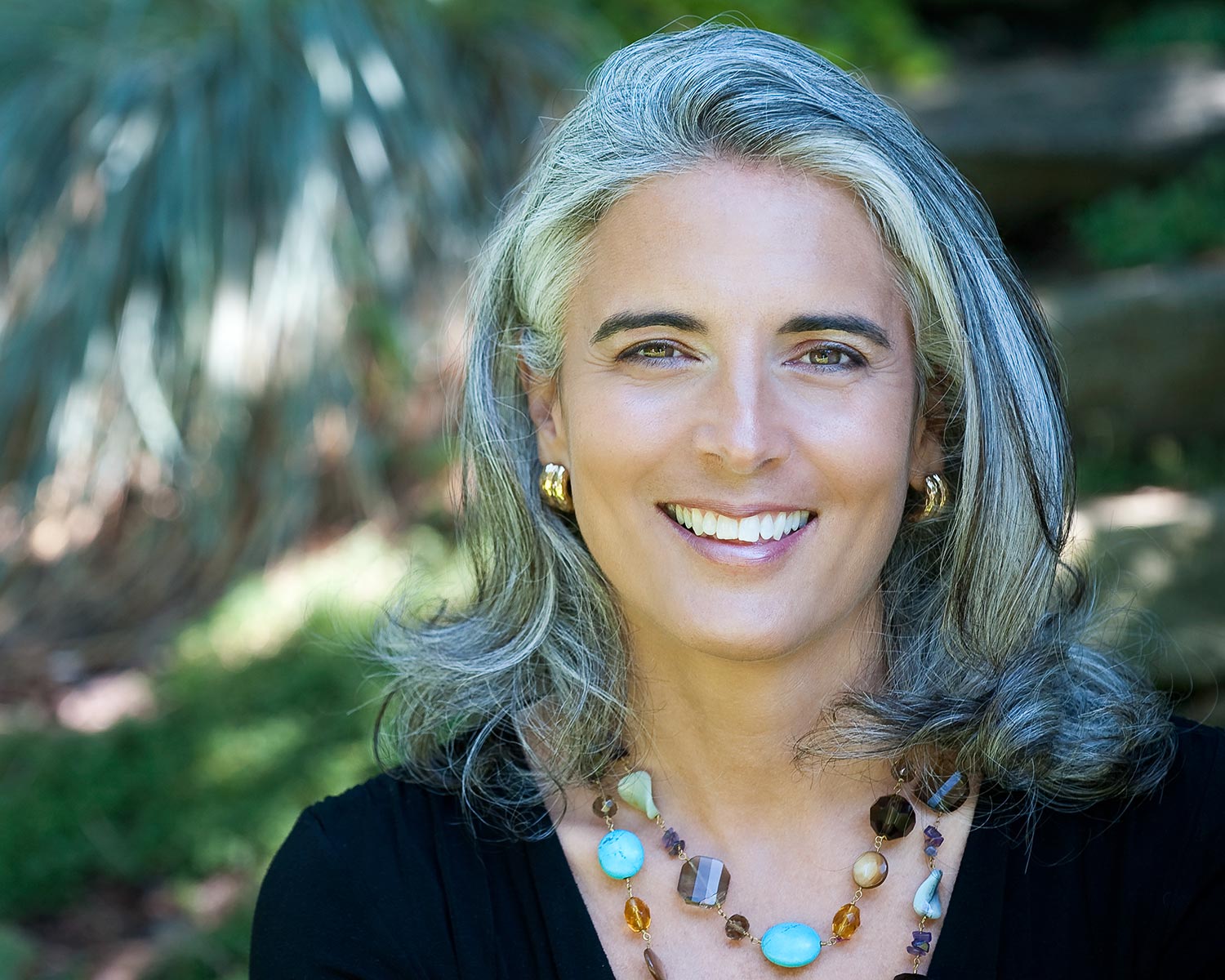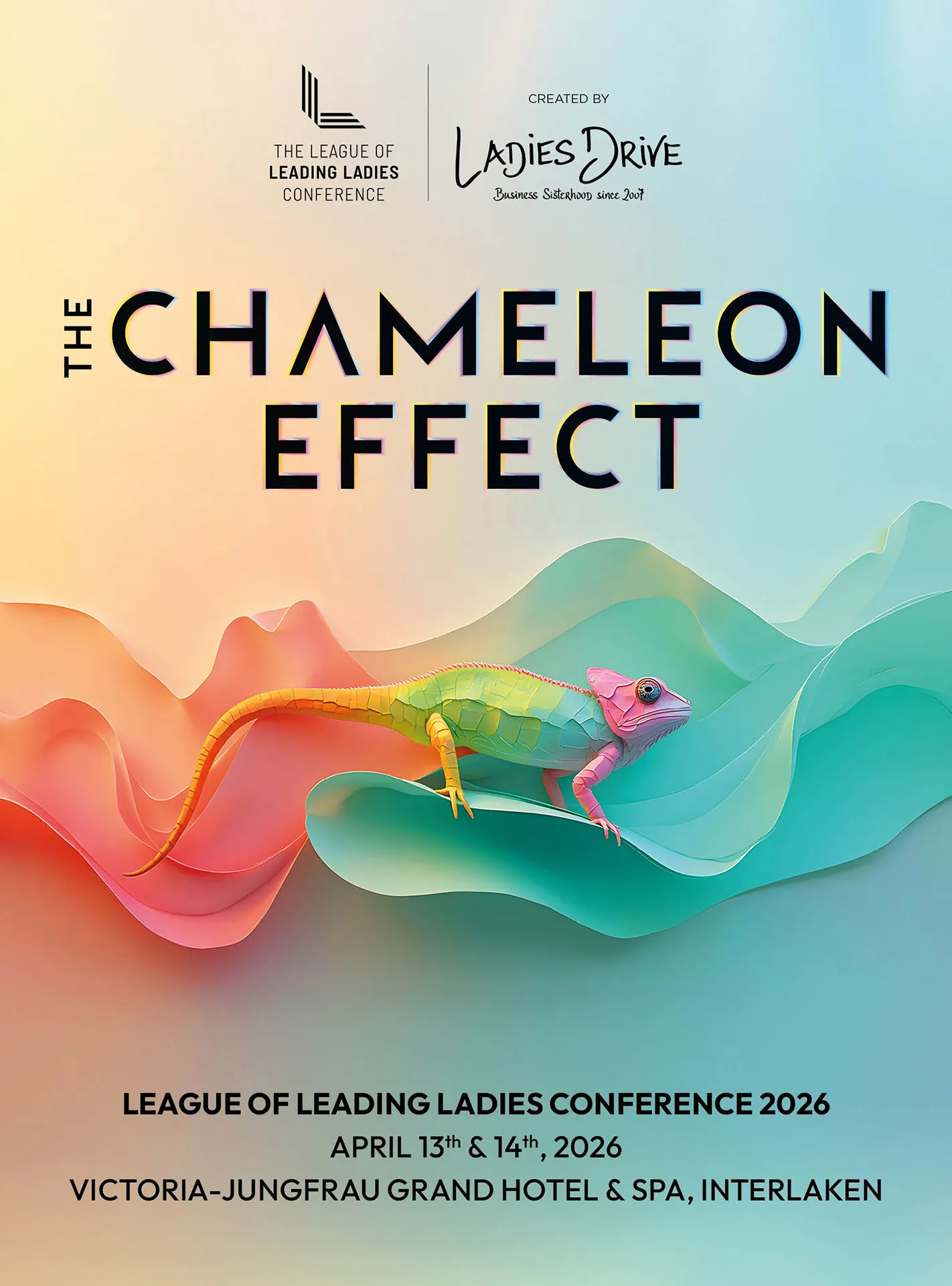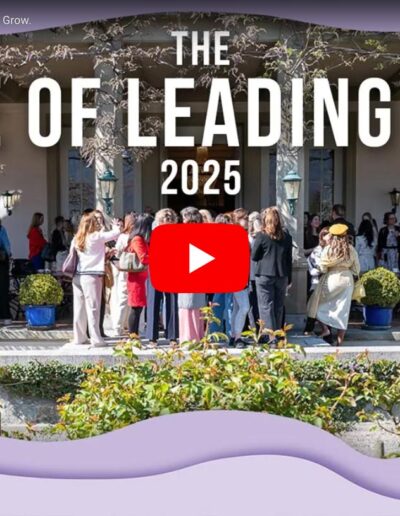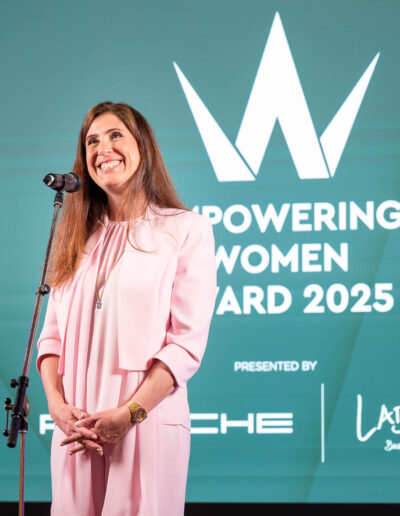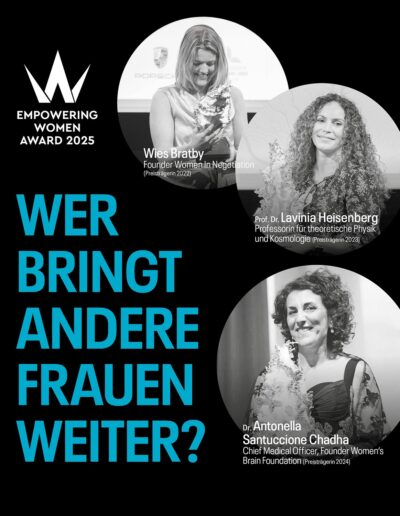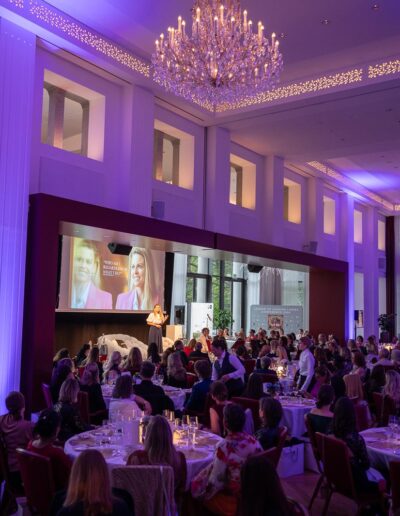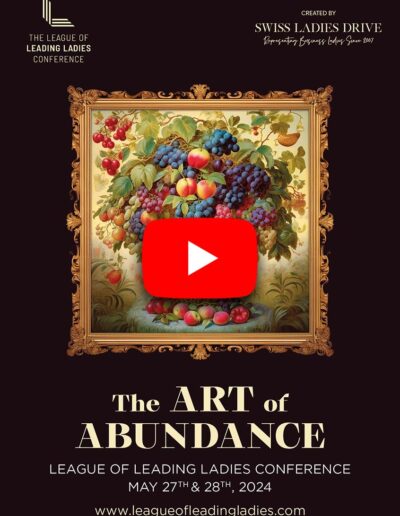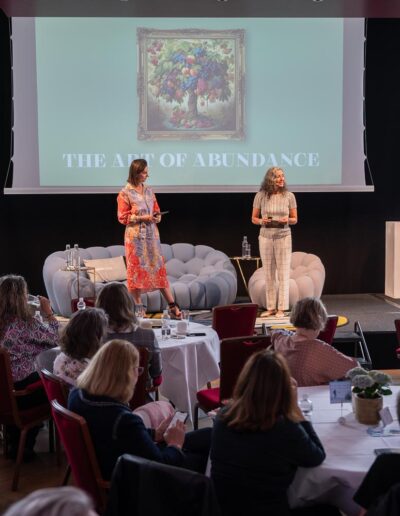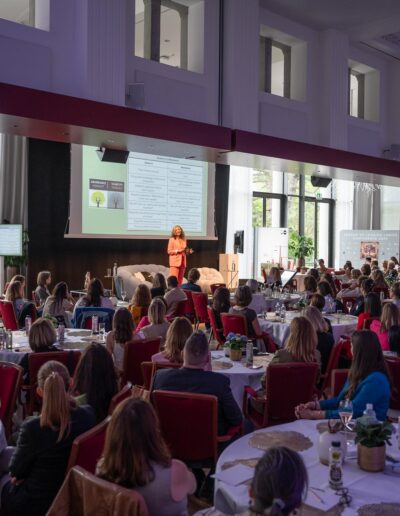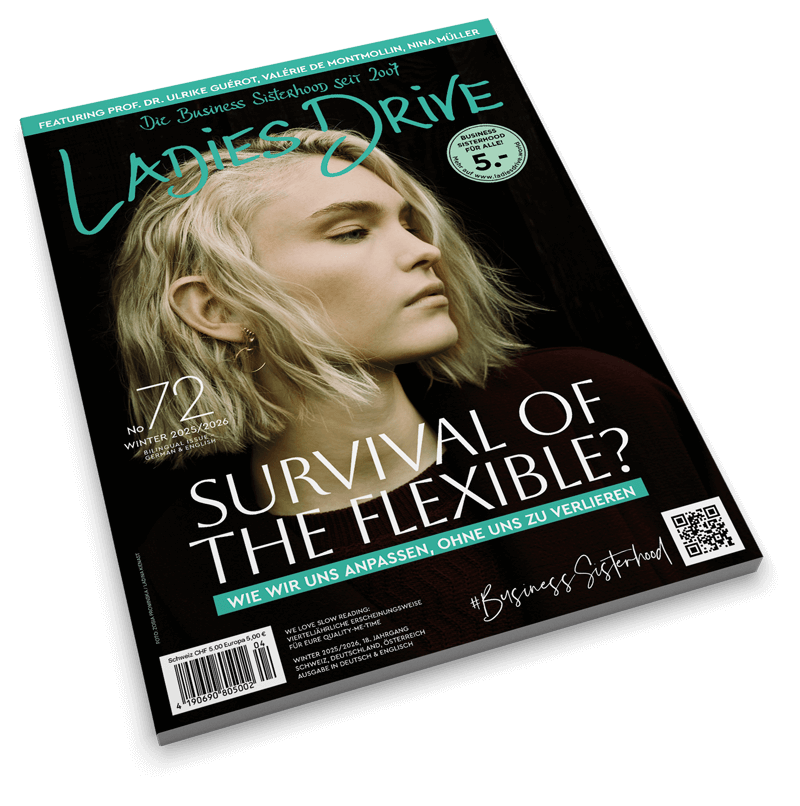A pandemic created a lot of these challenging circumstances in our world – most of us experienced changes in our lifestyle, how we perceive the world or how we interact with other people. But life in general holds a lot of challenges for us in store. The question is: how to we handle these challenges, problems, stressful circumstances – or traumas and crises that come our way more or less on a regular basis. The concept of resilience has been all over the place for years. But – there is a “resilience 2.0.” After every challenge that we really face, we raise our chances to grow, as a human being, as a leader.
US psychologist Maria Sirois (62) has studied and worked in the field of resilience and growth for more than 30 years and is one of the early adopters of the positive psychology-based approach to PTG.
Speaking with Maria was just eye opening. Yes. We can grow after a crisis, after a traumatic event. We just need to know how. We will walk you through!
And if you like to meet Maria Sirois in person – please get a ticket for our League of Leading Ladies Conference 2023 (June 12 & 13) in Bad Ragaz and enjoy her keynote and workshop together with our community.
Interview by: Sandra-Stella Triebl
Ladies Drive: Maria, how did you start to work on this topic – Post Traumatic Growth – ?
Maria Sirois: I’m a clinical psychologist by training, and in my late 20s, early 30s, I was studying psychology in graduate school. and I had the opportunity to work in a hospital setting with children diagnosed with cancers and other blood diseases. I was assigned that year to a unit called the Bone Marrow Unit, where we replace the bone marrow. Most pediatric cancers are curable. But bone marrow is the place of last resort. It’s where children go when chemotherapy and radiation and surgeries have not been successful. So many of the children on my service that year passed away. I was not surprised to see families losing a son or a daughter absolutely fall apart. We would expect that.
What I was surprised by was to watch families in the worst moments of their lives grow. Some of them became stronger, clearer about where to put their energy and their attention.
They became more generous to everyone, to the nursing staff, to the doctors, to the children, to their friends. It’s as if the heart broke open and expanded. And the mind broke open and expanded. And as I watched these families grow, as they were saying goodbye to their children, I just kept asking, you know, what is that and how do we all learn that? I didn’t have the language for it when I was 29, but it essentially is what we now call post traumatic growth. This possibility to grow through adversity. It doesn’t mean they weren’t in excruciating pain. It doesn’t mean that some days were just mind numbingly horrific. But they were able to hold both the dark and the light at the same time, and they kept choosing the light. By that I mean they kept choosing habits and practices that were sustaining. They kept choosing people who were nourishing to them. They kept choosing a mindset that enabled them to honor their pain but also see the future. And this is what we essentially call resilience. So I’ve been specializing in the domain of resilience for over 30 years now. Over time the field of positive psychology emerged, and that research is a beautiful complement to the traditional research on resilience. That’s where that all comes from.
As a psychologist, would you say that we are equally able to grow through lucky or happy circumstances than through traumatic circumstances?
So here’s the thing.
Growth requires a kind of mindset shift.
What you and I might think of as everyday happiness, doesn’t often cultivate a mindset shift. Because it doesn’t change how we see ourselves in the world. Bigger, happier moments – say you get engaged or you have your first child, or you found that company that you’ve always wanted to found – the research shows that in those bigger, happier moments, there is a shift. But it’s temporary. It only lasts about four to six months. So you get the promotion that you’ve always wanted. And then you return to the set point of happiness and meaning that you had before. Unless you cultivate the habits that potentiate growth, which is really what resilience is about.
Resilience is about adapting to difficult moments, but it’s also about cultivating the habit of growing in good times and in difficult times.
So – tell us – how to create the mindset of these habits to make growth potentially happening.
The first thing we have to do is:
Honor and acknowledge what we’re experiencing.
So say you’re in a moment where you’re heading toward burnout at work, or you are experiencing grief at home because of personal losses. We first have to acknowledge what we’re feeling. There’s no growth in denial.
But what if I cannot see that I am in denial?
That’s why one of the most important tenets of growth and of resilience is that we surround ourselves with people who can reflect back to us what they’re noticing. So, in other words, resilience doesn’t happen in isolation.
Hmm.
We have to be open to other people’s perceptions of what we’re experiencing or how we’re behaving. One of the CEOs in an organization I worked with during the pandemic – a travel company – he developed a panic disorder. But he couldn’t see it himself. He thought he was doing service to the company by forcing his executive team to meet with him three hours every single day. And it took one of his senior vice presidents to say to him: “OK, this actually isn’t working and I suspect that you’re forcing us to do this because of the level of anxiety you’re experiencing. Can we think about other ways to manage that anxiety?” So we need to have others’ wisdom around us. It is important that we share. The second step after acknowledging that we are experiencing something difficult, or we are in conflict internally, is to then ask, you know, what can I use? Which repertoire of tools? And here’s where positive psychology is just a beautiful treasure chest of practices and tools, which I’ll tell you in a moment. And then the third step for anyone is to periodically reflect: “OK, what’s really working? And can I invest more in that?” Right. So in terms of that toolbox, one of the things that we know to be true that potentiates both that growth mindset and stabilizes us in the present day, is to have an appreciative lens in the world to really invest in what you are grateful for even when things are difficult. You could choose to be in a mindset that says to you something like: “The world hates me. Everything that goes wrong happens to me.” But resilient folks acknowledge those negative thoughts and feelings and worries and doubts, and we don’t stay stuck there. We hold them, and then we choose optimism. We choose gratitude. We choose positive connections.
But is that an innate gift to be a resilient person? Or can we really learn that from scratch? Really change that mindset?
Here’s where the research in the traditional field of resilience in psychology is really helpful. And this is based on work by George Bonanno at Columbia University, probably the primary leading figure in the West in resilience research. About 75% of us are resilient no matter the crisis.
75%?
Yes. But there are about 25% of people who have trouble navigating the worst moments. Now, some of that is because they have a neurochemistry that’s very difficult for them. You know, some of us have wiring that doesn’t process information in ways that are helpful to us. And some of us have been so traumatized in history. When you think about it, suffering is not equally distributed. We all suffer, but it’s not equally distributed. And so some of us have histories that make it extraordinarily difficult to move toward growth and positivity. But most of us, most of the time, are resilient. If you scan the day at the very beginning for the things that could be problematic – that’s an anxious mindset. A resilient person will note that: Oh, here I am, spinning or ruminating or worrying again. – Learn to take a breath. And in that breath build in a tool that we call:
The Genius of the And.
We build in an And. And on the other side of the And, we want to acknowledge a thought that is also true but slightly positive. For example, if I wake up in the morning and say: I am not smart enough to figure this out. This business problem in front of me it’s too complex, it’s too challenging, it doesn’t play to any of my skill sets. I’m never going to figure this out. – And then we literally ask ourselves to come up with two or three phrases that are slightly positive and true; we actually believe them. Like: I know where I can go to for help. I have figured out complicated problems in the past and done just fine. I know I’m not alone in this world. – And what happens when we start to relate these positive thoughts, is, we build in what Dr. Karen Reivich from the University of Pennsylvania called cognitive flexibility. We build a brain that literally, neurochemically, has the capacity to be both anxious and hopeful.
Wow!
Frightened and optimistic, sad, and generous. We build a mindset and a brain that neurochemically can hold it all – but choose the positive. Now, that doesn’t happen overnight, but it does happen with regular practice, and it can happen dramatically.
So how long do we have to practice before the brain starts to kind of change directions?
To begin developing the habit of a positive psychology or resilience-based practice, we encourage you to practice something 21 to 30 days. First of all, the neurons that fire together become a little more wired together. By the time I’ve practiced something 21 days, psychologically I’ve begun to see myself as the kind of woman who builds resilience. While the brain is doing its work of sort of wiring together these more positive-based neurochemicals and hormones, the mind is starting to see itself as: “Oh, I’m the kind of woman who takes care of herself. I’m the kind of woman who chooses a healthier mindset. I’m the kind of woman who centers herself in the day, from a place of personal leadership.” And it is that perception of oneself that actually encourages us and creates the habit pathway of learning to lead our lives forward. You see resilience is an inside job. It isn’t given to us. It’s really about the choices that we make during the day.
Can we learn to be a positive thinker? Or do we have to wait until we have suffered enough?
The truth of the matter is, we don’t all have to have that crisis, worst moment to choose growth. Some of us choose growth earlier on. Some of us don’t choose growth until everything has fallen apart. And some of us…, well when everything has fallen apart, don’t choose growth anyway. There really is a choice element. We really need to know that it’s possible. So, for example, one of the great benefits of having an article in your magazine about post traumatic growth is that we let people know that it’s possible. And that hundreds of thousands of others have done so. And so knowing that it’s possible, it becomes part of our repertoire of choice. But there is a moment to choose. Yes, there is a moment at which we can decide: I’m either going to be a victim to circumstances and give in to the belief that nothing will ever be good again, or no one will ever love me again, or I’ll never be successful at work. Or we can hold that thought and then then try to build in those practices and habits and mindsets that move us forward.
But how can we break this toxic mindset?
A couple of different things make a difference. One is to have people around you who are encouraging and supporting. That is important but not complete. Secondly, it’s important to have role models. Which is why your organization, your business sisterhood, is so helpful.
It’s important to have people who have journeyed through dark territories or difficult moments and found their way through and grown. So that’s why some of these shared moments and stories are so important. It’s so important to see other women have founded companies and they’ve gotten there. They’ve gotten to the three year and the five year and the 10 year mark, right? Same is true in resilience – that we need to have role models who have been through hell. There is a wonderful researcher in our field named Lucy Hone from New Zealand who was always a resilience researcher. That was her interest. And then a number of years ago, her daughter was killed in a car accident. And we in our field have a chance to see how this woman, who is a beautiful thinker, and data analyst, and psychologist, also learned to grow through her own adversity. And then the last element is we need to know that there’s a choice and I can choose.
I can choose to feel my suffering and be grateful.
I can choose to believe that the world is against me and look for evidence that it’s actually not always against me every minute of every day. There are some moments of respite in the day.
One of the tools I encourage people to do, because it’s so easy to learn and apply is to record the best moment of the day. Imagine a moment of crisis. You’ve lost someone you love dearly, like your mom, right? Or a moment of crisis at work, everything has fallen apart financially at work, for whatever reason. And then for the next 21 days, I ask you to simply just before you go to sleep at night, take a moment and record what was the best moment of the day.
What if I don’t find any good moments?
Well, once you begin practicing the tool, you’ll start to notice that there are more best moments in the day than you realize.
Can I force myself to see the first coffee in the morning as a good thing?
Yeah. Yeah, absolutely. Like just one moment that was peaceful for you or calming… Just right for you, you know, you start to help train people to look in with a more appreciative lens. For me, the day my brother died, the worst day of my life, there was a best moment that day.
What was it that you found on this worst day of your life?
My brother had four teenage children and three of them were still at home in school. And the school was just about a half a kilometer from the house. And he died on a Monday morning at about 11 o’clock and, you know, a couple of his children were in the house with us. One of them was at school and the other one was away at university. The children must have texted their friends right away. We, the adults, are in various stages of shock and grief. And the intensity of the grief was so heartbreaking that I had to step outside for a few moments. And as I stepped outside onto my brother’s front porch, I started seeing middle school and high school students come up the path from the school to my brother’s house. This is in the middle of the school day, clearly they had not gone to the head of school’s office to get permission. They literally left and said to their teachers, we’re going to be with our friends. And about 15 children just came to be with my nieces and nephews and seeing that love, unexpectedly, without question, without hesitation, that was the moment I held on to that day.
After the darkest hours comes the rising sun, right. It’s easier said than done. But once you see the beauty in the smallest things, when you’re able to see that, you see it over and over again. You have to train your senses to see it and experience it, right?
That’s why this simple practice can begin to train you. You learn that there are more best moments. You start to see yourself as the kind of person that in the darkest times, chooses the light. We don’t deny the dark. There’s no growth in denial. But we integrate in the light, and there’s a beautiful metaphor that might be helpful for your readers.
In Japan they create bowls from broken pieces. It’s been broken and now lined with gold lacquer. It’s an art form called Kintsugi.
It emerged in Japan in the 15th century and it became so popular that it became a philosophy that even as the bowl has been broken, it’s purpose remains intact, it’s still a vessel. Even as we are fractured and flawed and imperfect and suffering, we can hold the whole of ourselves by actually choosing the practices and habits that bring us the fractured parts back together. I’m imperfect, and I choose these practices that honor my goodness, my strengths, my wisdom. I’m sad, and I choose the practices that cultivate hope. So this is really the metaphor of post traumatic growth. We are fractured and flawed. And we choose to hold the whole together by integrating in these positive psychology-based practices.
That’s really wonderful. Thank you for sharing that. But how can we kind of be okay with pain and suffering?
Yeah, you know, that starts with acceptance that suffering is life. And there’s a beautiful Buddhist tale, Stella, about a woman who loses her only child and she tracks thousands of miles to meet the Buddha. Sits with the Buddha and asks for the return of her child. And the Buddha says: “I will consider your question if you first do me one favor.” He says: “Please find me the House of No Suffering.” She journeys the entire world for a year knocking on every door. Returns back to the Buddha, sits in front of him and simply says: “Thank you.” Because she’s learned. There is no House of No Suffering, right? The first, always, is this acceptance that suffering is a part of living. That it is everywhere. And in fact one of the pieces of evidence of post traumatic growth in that shift of mindset is we recognize that we are not alone in our suffering. That others have faced war before, or death, or crises of the spirit, or financial difficulties. We are not alone.
The first step is acceptance.
And here’s where a kind of mindfulness practice is really useful. The capacity to sit still for a moment and just allow the pain, allow the doubt, allow the fear to exist, and then choose to build in that end.
Very, very helpful. Thank you so much. Is post traumatic growth something cultural or are there cultural differences?
I don’t know that there’s enough research yet to be able to answer that with any integrity. I do know that some of the positive psychology practices that are incredibly strong in the West are not as useful in the East. So, for example, one of the things that we love to do in America, here, is talk about our character strengths. Our values and virtues, like courage and prudence and social intelligence and so on. And yet a number of cultures in Asia have a high value on humility. So to invest in talking about and discussing their strengths, doesn’t make as much sense to them because it’s counter to their posture of humility as a high value.
And are there gender differences?
I think there are gender differences in how we experience and express resilience and growth. But not necessarily differences in the capacity to experience growth.
The women may be more likely to recognize growth in the experiences of feeling a greater sense of contentment or a greater sense of ease with suffering, whereas many of the men I’ve worked with, they’ll talk about growth predominantly as that sense of inner control and inner strength, capacity first.
What are your top tips for us? What can we do to create a post traumatic growth?
First is to recognize that post-traumatic growth is an option at any time. So no matter how difficult the moment. Secondly, it’s an inside job, it is up to each of us to choose growth. And it rests on the perspective of personal leadership.
And what we know resilient folks do brilliantly, is, they take the day and they shape it in one of three directions, every day.
I either do one thing today that will inspire, elevate, or energize me. Or I do one thing today that will calm me down, quiet my spinning mind. Or I do one thing that builds my capacity, my knowledge, my strength. Every day will have a different requirement, or invitation if you will, and resilient folks don’t take any day for granted. Now when I say reshape the day, we only have to do a few minutes every day. So today I might choose that I need to calm myself down and I decide that I’m going to spend 10 minutes reading a book of poetry that I love. But tomorrow I might feel like, I really need to feel a little more prepared for this life thing and so I spend 15 minutes researching something that I want to know. I increase my knowledge. The next day after that, I might feel like: “God, I’m exhausted. I need to build up my vitality.” So I watch something that makes me feel happy, creates a smile on my face. So every day choose one thing that will either inspire, strengthen, or calm you.
I have one last, more personal question. When you’re looking out into the world, we see that we’re on the edge of a really big reset, big transfer, however you want to call it. I think the future most probably won’t look the same as we are used to. How do you feel if you think about this?
More than anything, I feel sad.
Why sad?
I feel grief for the next generations and what they will experience. I feel great grief about the planet. And sorrow about what we didn’t know and what our parent’s generation and our grandparent’s generation didn’t know. My primary emotion when I look at the future is sorrow right now. And a kind of weariness like, you know, fatigue about it all. And I do feel hopeful for a few different reasons, too. Number one, because I’ve trained myself to look for good news. There’s good news everywhere. There’s good news in terms of species, and climate, and commitments from organizations to become green, both the big organizations and the small ones. And I feel hopeful. We, my partner and I, have five young adults between us and I feel hopeful about what they are devoted to, and what they are demanding of us and of the world. And I also feel helpful when I look back historically, you know, there is so much bad news. And yet if you look at the big picture, the facts are, you know, our ability to recover from natural disasters it’s better than it’s ever been globally. Girls literacy rates are higher than they’ve ever been globally. Infant mortality is better than it’s ever been. So, on a number of big picture concerns, we are actually doing better than we were 50 or 100 years ago. So I tried to keep my mind on the biggest picture possible. Look for evidence of the good and at the end of the day, Stella, I do feel, personally, that if I’m here, if I have decided that the meaning of my life is to help cultivate resilience and hope, then it is up to me to continue to invest in ways to be able to hold the pain and the suffering and open the door to a grounded hope. And I see evidence of that in myself, and in people around us everywhere.

